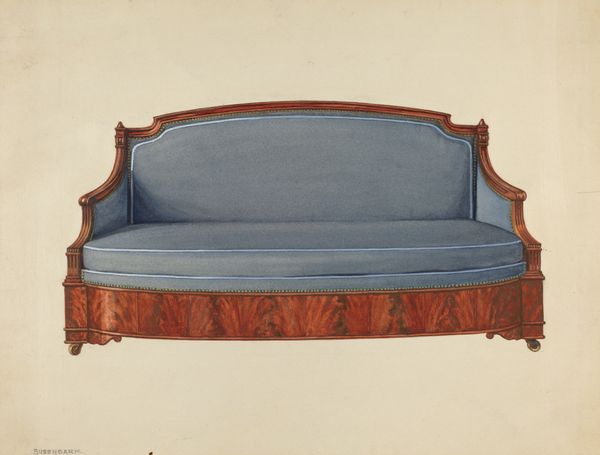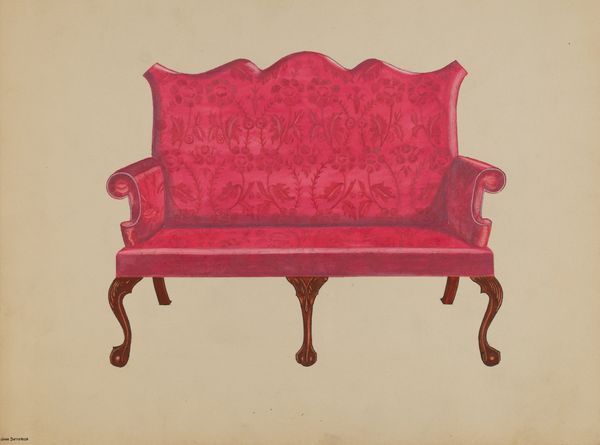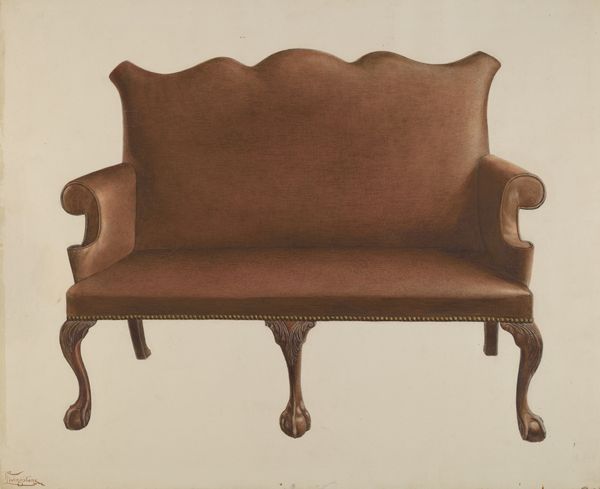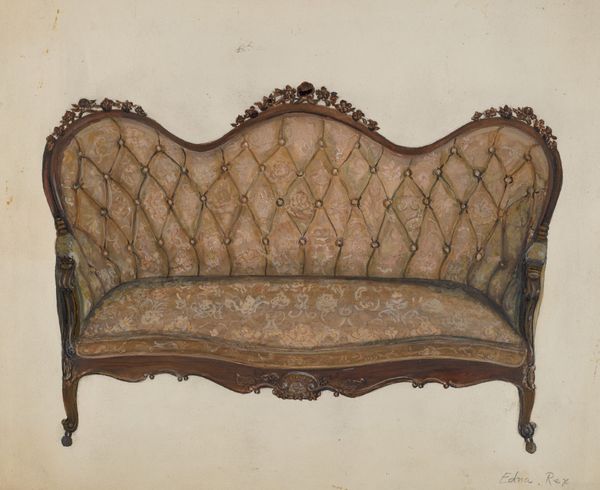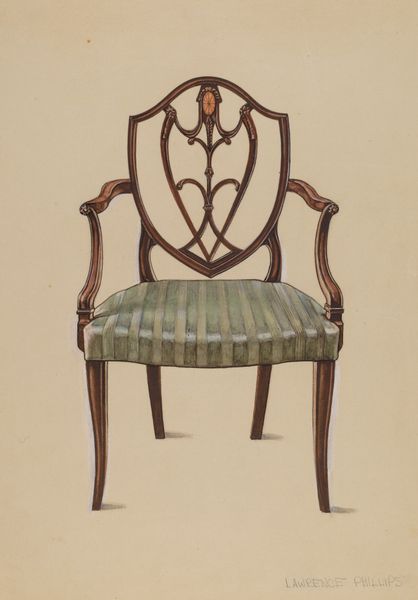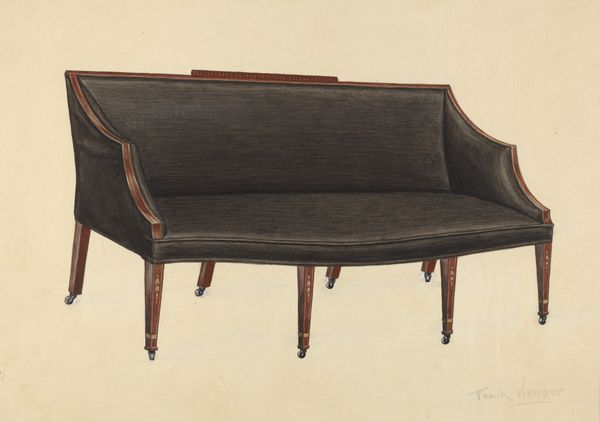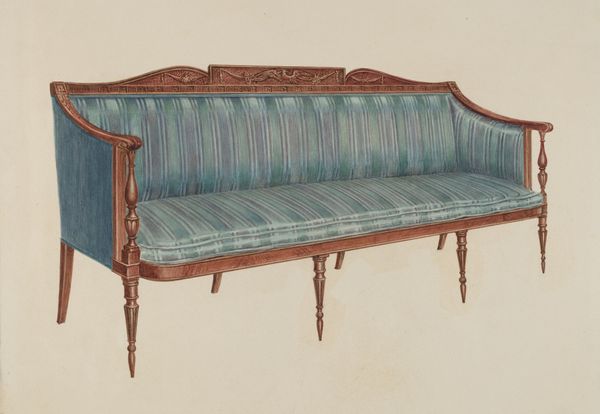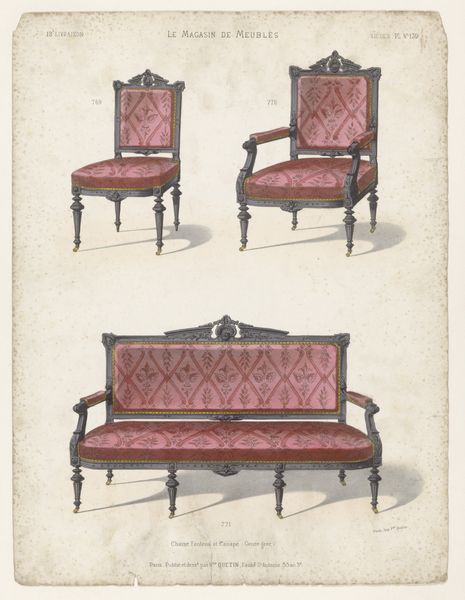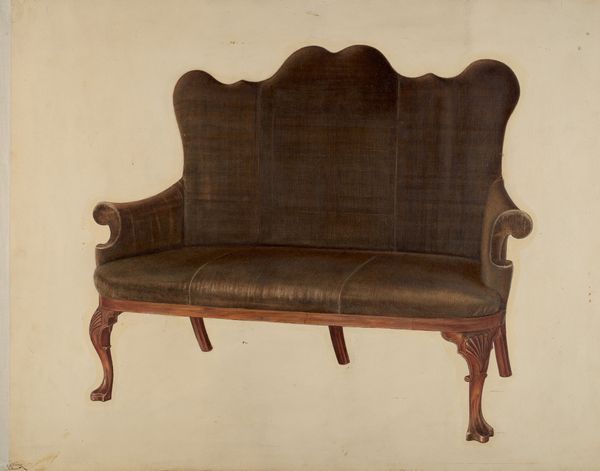
drawing, watercolor
#
drawing
#
toned paper
#
watercolor
#
watercolour illustration
#
decorative-art
#
watercolor
Dimensions: overall: 22.7 x 29.2 cm (8 15/16 x 11 1/2 in.) Original IAD Object: 66"long
Copyright: National Gallery of Art: CC0 1.0
Editor: This is a watercolor drawing titled "Settee Couch," created around 1936. The rich, dark upholstery contrasts beautifully with the ornate, reddish-brown frame. It evokes a feeling of quiet elegance. What sort of symbolism do you find embedded in this piece? Curator: Ah, yes, a deceptively simple image. What catches my eye is the absence of figures. Couches, especially elegant settees like this, are often depicted with people – lovers, families, confidantes. Its emptiness is palpable. Doesn't that absence become a powerful symbol of…longing? Editor: Longing? That’s an interesting perspective. I was focused on the aesthetic beauty of the design. Curator: Indeed. The design speaks of a certain social status and aspiration, echoing styles from previous eras while perhaps hinting at modernism's rejection of such ornamentation. This piece freezes a moment in the late 1930's between The Depression and the march to World War. Where might you expect to find this couch in real life? Editor: Perhaps in the waiting room of a doctor’s office or in the foyer of a grand house? Somewhere with a sense of traditional, but slightly faded, glamour? Curator: Precisely! And what kind of stories would be told in those places and upon that settee? It embodies those potential stories – whispered secrets, hopeful ambitions, quiet moments of respite before it even holds a body! Look how those repeated patterns and deep set diamonds can represent repetition through generations? Editor: That’s fascinating; the potential for storytelling woven into the very fabric—or watercolor, in this case! I will consider emptiness in a new light, moving forward. Curator: It makes you ponder what this means about the culture's aspirations, and hidden memories. Wonderful food for thought!
Comments
No comments
Be the first to comment and join the conversation on the ultimate creative platform.



